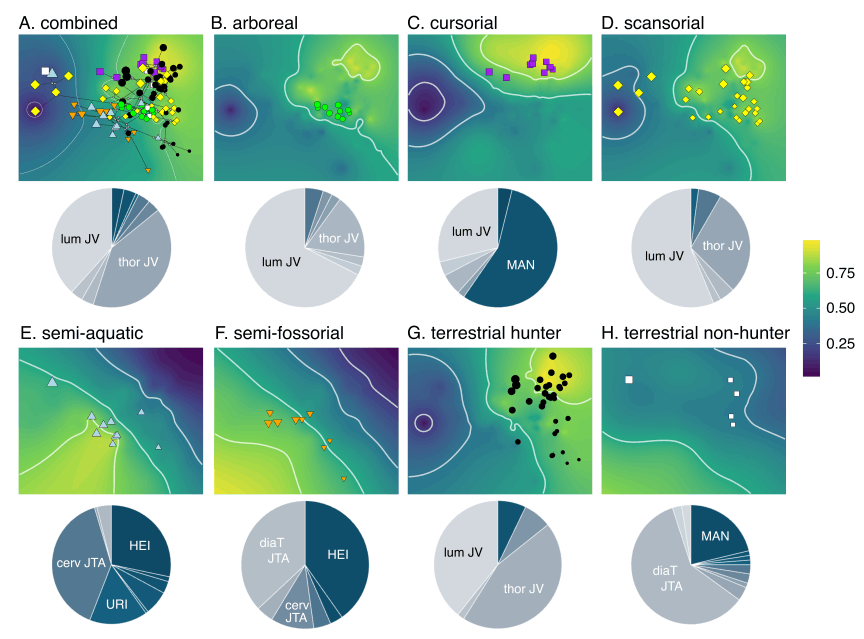The carnivoran skeleton exhibits mosaic evolution, where only the mandible, hindlimb and posterior (i.e. last thoracic and lumbar) vertebrae showed evidence of adaptation towards ecological regimes. In contrast, the remaining skeletal components (i.e., cranium, forelimb, and anterior (cervical and thoracic) vertebrae exhibit clade-specific evolutionary shifts that corresponded well to carnivoran clades. We hypothesized that the decoupled evolution of individual skeletal components may have led to the origination of distinct adaptive zones and morphologies among extant carnivoran families that reflect phylogenetic hierarchies.
Law CJ, Hlusko LJ, & Tseng ZJ. 2024. Uncovering the mosaic evolution of the carnivoran skeletal system. Biology Letters. 20:20230526. doi.org/10.1098/rsbl.2023.0526

